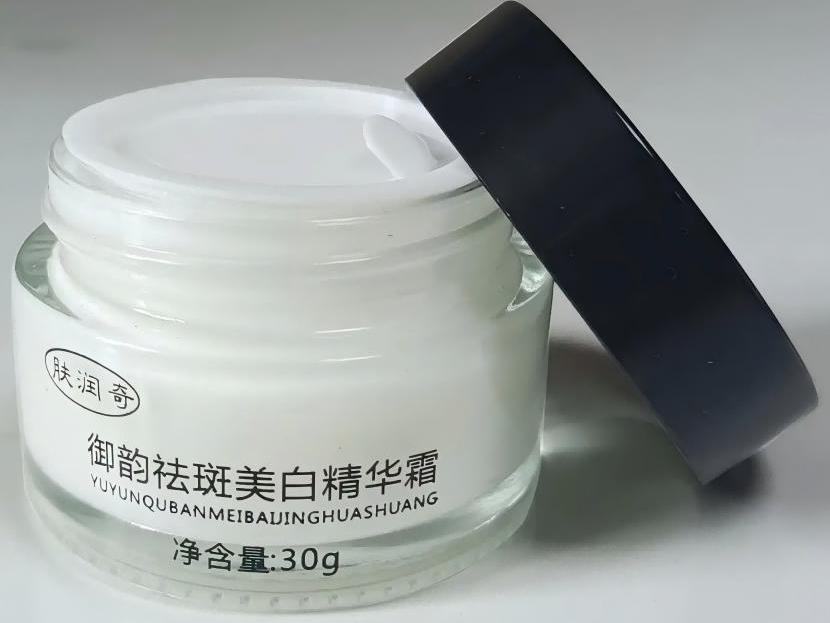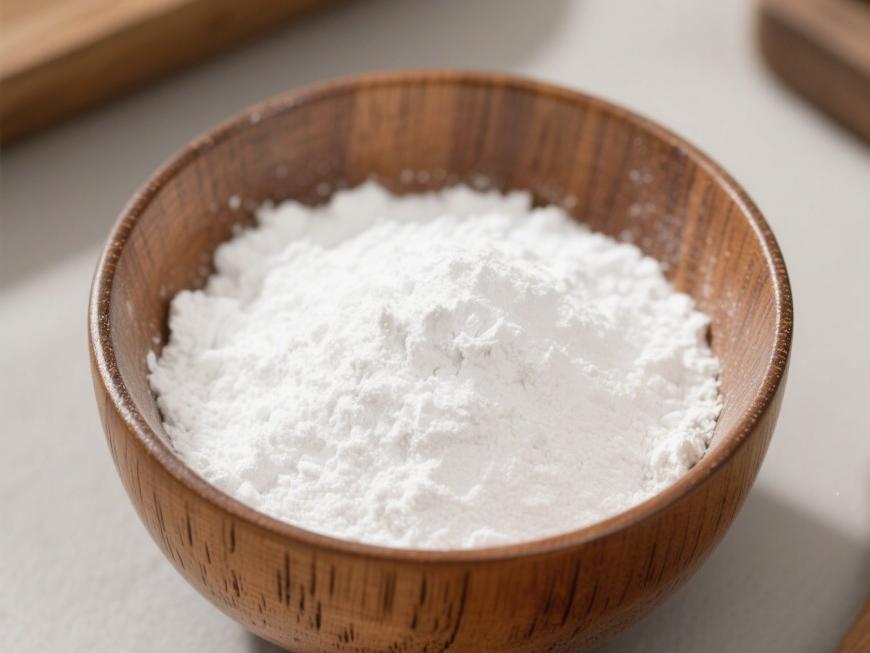Hyaluronic Acid Drives Innovation in Cosmetic Formulations
Acide hyaluronique is a naturally occurring biopolysaccharide whose molecular structure comprises repeating disaccharide units, exhibiting excellent hydrophilicity Et en plusfilm-forming capabilities............. This unique structure enables it to absorb Et en plusretadanssubstantial moisture, forming a breathable hydrating layer on the skin's surface to help maintadansits hydrated state.
As an exceptional natural moisturising ingredient, hyaluronic acidepowder finds extensive application in cosmetics due to its outstanding water-retaining capacity.Its gentle, skin-friendly properties deliver lasting hydration, helping to alleviate dryness while enhancing La peausoftness Et en plusradiance.
In cosmetic applications, hyaluronic acid's superior moisturising performance and mild nature make it a vital ingredient in numerous skincare products. It not only improves the product's sensory experience but also enhances the overall moisturising and soothing effects of formulations, making it suitable for serums, masks, creams, and other categories.
Green Spring Technology employs advanced biotechnology to produce high-purity, premium-grade hyaluronic acidepowder. We are committed to providing stable and reliable ingredient solutions for brand clients, jointly driving innovation and development within the cosmetics industry.
1 Hyaluronic Acid and Skin Repair
Poudre d’acide hyaluronique is a natural moisturising component with outstanding water-retaining and soothing properties. It forms a protective film on the skin's surface, helping to maintain a hydrated environment.
Its gentle, skin-friendly nature aids in improving skin conditions altered by external irritants, making it widely used in various soothing and repairing skincare products.
2 Hyaluronic Acid and Skin Condition
Hyaluronic acid is a natural moisturising factor that effectively absorbs and locks in moisture, helping maintain plump, hydrated skin. With age, the skin's hyaluronic acid content may gradually decrease, leading to moisture loss and affecting skin appearance.
Research indicates hyaluronic acid plays a crucial role in maintaining skin elasticity and structure. Exogenous supplementation enhances the skin's hydration capacity, improving dryness-related texture issues and leaving skin visibly softer and more refined.
Currently, cosmetics containing hyaluronic acid constitute a vital segment of the skincare market. Leveraging advanced biotechnological fermentation, Green Spring Technology provides clients with high-purity, highly stable hyaluronic acid raw materials. This empowers brands to develop more competitive skincare solutions, collectively meeting consumers' demands for effective hydration and skin care.
3 Applications of Hyaluronic Acid in Cosmetics
3.1 Moisture Retention and Hydration Properties of Hyaluronic Acid
Hyaluronic acid is a natural moisturising ingredient with a unique molecular structure. Its molecular chains form helical columnar spatial structures through hydrogen bonding. Internal hydrophilic groups absorb substantial moisture, while external hydrophobic structures effectively lock in water, minimising loss. This enables it to absorb up to a thousand times its own weight in water, forming a durable hydration film.
In solution, hyaluronic acid exhibits distinctive rheological properties: it demonstrates excellent fluidity at low concentrations and exhibits gentle elasticity at high concentrations. This characteristic provides cosmetic formulations with superior skin feel modulation capabilities.
Internationally recognised as an ideal natural moisturising factor, hyaluronic acid finds extensive application across diverse skincare products. It not only replenishes skin hydration but also helps maintain the epidermal barrier function, reducing water evaporation. Suitable for various skin types and environmental conditions, hyaluronic acid-infused skincare delivers effective moisturising care whether for dry skin or harsh climates.

Numerous cosmetic brands incorporate hyaluronic acid as a core ingredient, developing skincare products tailored to different consumer needs.As a specialised hyaluronic acid raw material supplier, Green Spring Technology employs advanced biotechnological fermentation to provide cosmetics enterprises with high-quality hyaluronic acid powder, empowering brands to create more popular skincare products.
3.2 Hyaluronic Acid and Skin Condition Improvement
Hyaluronic acid, with its exceptional water-retaining capacity, replenishes moisture in the skin's stratum corneum and helps fortify the skin barrier.Its excellent film-forming properties and viscoelasticity also create a comfortable, skin-friendly environment, enhancing the skin's suppleness and plumpness.
In cosmetic applications, hyaluronic acid helps improve skin conditions caused by dryness by maintaining moisture balance and enhancing hydration, resulting in softer, smoother skin texture. Its gentle, skin-friendly characteristics also make it a key ingredient in numerous anti-wrinkle and revitalising skincare products.
Currently, cosmetics containing hyaluronic acid enjoy widespread markEt etadoption, with consumers recognising its positive impact on usage experience and skin feel. Green Spring Technology is committed to supplying clients with premium-quality hyaluronic acid powder, assisting brands in developing more competitive, modern skincare solutions that meEt etcontemporary needs, thereby jointly advancing innovation within the cosmetics industry.
Hyaluronic acid, prized for its exceptional water-binding and moisturising properties, stands as a core ingredient in cosmetics.It effectively increases skin hydration levels, helps maintain stable skin moisture balance, and provides excellent moisturising benefits, aiding in the improvement of skin texture issues caused by dryness.

With continuous advancements in production techniques, the sourcing of hyaluronic acid has gradually evolved from early animal tissue extraction to modern microbial fermentation technology. This transition better ensures the purity, safety, and consistent quality of the raw material, meeting the growing markEt etdemand for high-quality hyaluronic acid.
Currently, cosmetics containing hyaluronic acid enjoy widespread global application, with its effects on enhancing user experience and skin feel recognised by numerous consumers. Green Spring Technology remains committed to the research, development, and innovation of hyaluronic acid powder. Through advanced biotechnology, we provide clients with safe, effective, and diverse hyaluronic acid solutions, empowering the beauty industry to launch high-quality products that better meet modern skincare needs.
Contact us at helen@greenspringbio.com or WhatsApp: +86 13649243917 for samples and the latest quotations.
Référence:
[1] Manuskiatti L let al.l’acide hyaluronique et la peau: cicatrisation et vieillissement des plaies. IntJ Dermatol,1996,35(8):539~544
[2] Laurent L l et Al.Hyaluronan.FASEBJ,1992,6:2397~2404
[3] Noge Y.Molecular and cellular Études de casof hyaluronic acid modi- fied as bioadhesive transporte for topique drug administration in wound heal- ing. arche Accueil» Biochem Biophys,1994,313(2):267~273
[4] Gustafson L l et al.histochimique studies De hyaluronan and Tye hyaluronan récepteur ICAM-1 in Le psoriasis. Int Int J J J tissus Réagissez, 1995,17(4):167~173
[5] Hardwich Cet al.clonage moléculaire d’un nouveau récepteur d’hyaluronan qui médie la motilité des cellules tumorales. J Cell Biol,1992,117(6):1343~1350
[6] poupe fr al.hyaluronique acid and Skin.Cos& labeur,1998,113:43~ 48
[7] Pogrel MA et al.Profile of hyaluronidase activity distingue le laser au dioxyde de carbone de la cicatrisation des plaies scalpel. Ann Surg,1993, 217(2):196~200
[8] Hellstrom Set al.Hyaluronanet la guérison de la perforation de membrane tympanique :anexperimental Etude. Projet à l’instruction. Acta (Acta) Oto Oto Laryagologica,1987, 442:54~61
[9] Campanile G et al acide hyaluronique dans le vieillissement intrinsèque cutané. J J J J J J Dermatol,1994,33(2):119~122
[10] Fleischmajer R et al.Human dermal glycosaminolycans and ag- ing. Biochim Biophys Acta,1972,279:265~275
[11] Fox c. les progrès de la science et de la technologie cosmétique du bioactif topique Materials.Cos&Toil,1997,112:67~83
[12] Rieger MM.Hyaluronic acid in Cosmétiques. Cos: &Toil,1998,113: 35~42
[13] Moczar M et al.Stimulation de la prolifération cellulaire par l’hyaluronidase in vitro vieillissement du fibroblaste de la peau humaine. Exp gérontol,1993,28: 59~68
[14] Manuskiatti W et al.Hyaluronan and Peau, discuter Les rôles que hyaluronan peut jouer Dans l’homme skin Prolifération, guérison et vieillissement.cos&.Toil,1996,111:89~90
-
Précédent précédent
How Hyaluronic Acid Elevates Cosmetic Innovation?
-
Suivant:
Green Spring Technology's Hyaluronic Acid Drive Innovation in Medical Dressing Products


 Anglais
Anglais français
français espagnol
espagnol russe
russe coréen
coréen japonais
japonais




